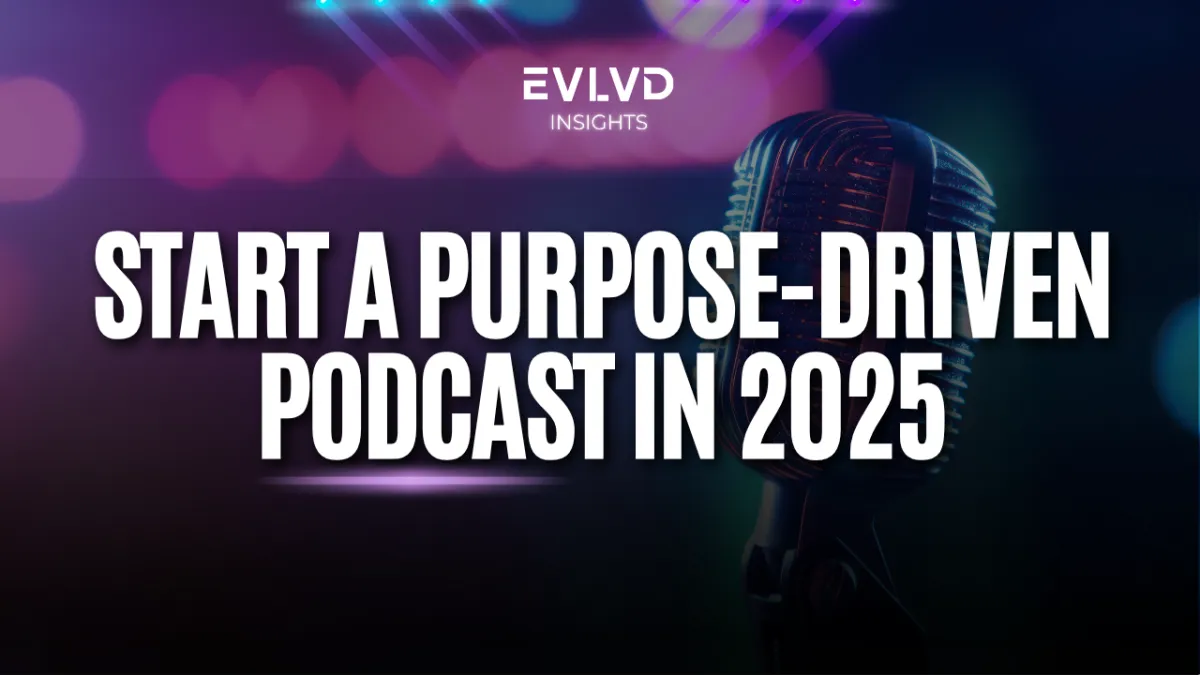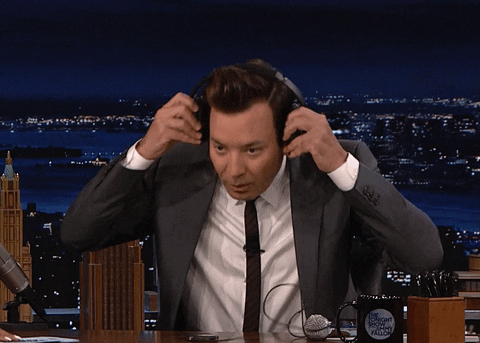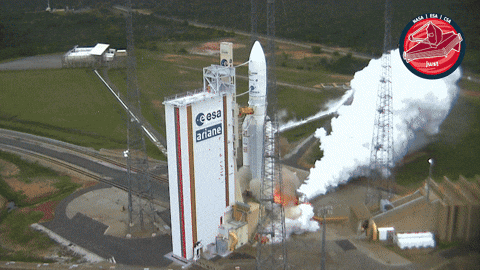
How to Start a Podcast in 2025: The Ultimate Guide for Coaches and Experts
You’ve got the ideas.
The voice.
The message that could shift someone's day, maybe even their life.
But the whole “start a podcast” thing?
Feels like standing in front of a mixing board with a hundred blinking buttons.
You’ve opened tabs. Saved reels. Maybe even bought a mic.
Still no podcast.
Let’s change that.
This isn’t another fluffy post written by someone who’s never touched a mic.
This is the real guide for coaches and experts who want to launch a podcast that doesn’t just sound good, it works. As in, brings in leads, builds your brand, and becomes your best-performing content channel.
“The best marketing doesn’t feel like marketing. It feels like connection.” – Ann Handley
And a podcast, done right, is one of the most powerful ways to create that connection.
So if you’re ready to stop watching everyone else launch while your voice stays stuck in your throat, read on.
This is your step-by-step. No jargon. No fluff. No hype. Just a clear path from idea to launch.

STEP 1: Why Podcasting Still Matters in 2025
Let’s cut to it.
Every year, someone declares podcasting is “oversaturated.”
Too many shows. Too many voices. Too late to start.
That’s the same thing they said about blogs in 2010. And newsletters in 2015. And YouTube in 2018.
But here’s what actually happened.
The people who started anyway?
They own the platforms now.
“It’s not about being first. It’s about being unforgettable.”
– Cole Schafer
Podcasting is not dead. It’s evolving.
And if you’re a coach, consultant, or expert in your field, there has never been a better time to claim your space in someone’s headphones.
Here’s why it still works:
1. People crave long-form connection.
In a world of three-second scrolls, podcasts are one of the last spaces where people still listen.
Not skim. Not swipe. Listen.
That kind of attention is rare. And valuable.
2. It builds trust at scale.
You can’t fake your voice. Not for long.
Which is exactly why it works. Your audience hears your tone, your stories, your pauses. That builds trust faster than any sales page ever could.
3. You don’t need millions of listeners.
You need the right few hundred.
A niche audience, tuned into your message, is infinitely more powerful than chasing charts.
4. Search engines are finally catching up.
Google now indexes podcast episodes. Transcripts boost SEO. Smart podcasters treat their show like content marketing, and it works.

STEP 2: Define Your Purpose and Audience Before You Touch a Mic
Before You Touch a Mic, Get Clear on This
Here’s the truth most people skip.
You don’t start a podcast by buying a mic.
You start by asking one question:
Why am I doing this?
If the answer is “because everyone else is,” you’re already setting yourself up to fizzle out after episode four.
Here’s what actually works.
“The most successful creators are the ones who start with a mission, not a microphone.”
– Julia McCoy
Your mission doesn’t need to be world-shattering.
But it needs to be clear.
Try answering these out loud:
What do I want this podcast to do for my business?
Grow your brand? Sell offers? Build trust before the pitch?
Who am I trying to reach, specifically?
Not “everyone who’s into mindset.” Try “female founders scaling past 100K who feel like they’re burning out.”
What do I want my listener to walk away with after each episode?
Insight. A strategy. A feeling. Something useful. Something that sticks.
When you know your purpose, your podcast becomes magnetic.
Not loud. Not perfect. Just clear.
And in the digital world, clarity is what cuts through.
“People don’t remember what you said. They remember how you made them feel. Make them feel seen.”
– Laura Belgray
Pro Tip: Write a one-sentence mission for your show
Like this:
“This podcast helps [who you serve] solve [core problem] so they can [desired outcome].”
Examples:
This podcast helps creative entrepreneurs overcome content burnout so they can grow consistently without selling their soul.
This podcast helps mindset coaches attract aligned clients through storytelling that sells.
Stick it on your wall. It’s your north star.

STEP 3: Choose a Profitable Podcast Niche That Doesn’t Box You In
This is the part where most new podcasters freeze up.
They overthink.
They try to appeal to everyone.
They get stuck in the "but what if I want to talk about multiple things" spiral.
Then nothing launches.
Let’s break you out of that loop.
“If you try to talk to everyone, no one hears you.”
– Brian Dean
Start with What You Know, Then Sharpen It
The best niche is often right in front of you.
It’s the thing people already ask you about.
It’s the transformation you’ve helped clients create again and again.
It’s the problem you could talk about for hours and not get bored.
But here’s the catch: it needs to be specific enough that your ideal listener sees themselves in it immediately.
Too vague:
"Mindset"
"Wellness"
"Marketing for coaches"
Sharpened:
Mindset for burnt-out women scaling coaching businesses past six figures
Wellness strategies for high-performing female founders with zero free time
Evergreen marketing for coaches tired of chasing trends
See the difference?
One is a category. The other is a conversation.
“Niche is not limitation. It’s acceleration.”
– Gael Breton
Niche Sweet Spot Framework
To make it even simpler, use this formula:
Your Experience
plus
Audience Desire
plus
Market Demand
If you are a business coach who has built your brand through storytelling and your audience wants visibility without dancing on reels, then your niche might be:
Authentic marketing for purpose-led coaches who want clients, not followers.
And yes, that is a show people will listen to. Because it solves a problem they already know they have.
Bonus: Name Your Niche, Not Just Your Show
Your niche should influence your podcast name. But we’ll dive into naming in a later section.
For now, write this down:
I help [specific person] do [specific outcome] without [specific frustration].
Examples:
I help coaches fill their programs without using salesy tactics.
I help course creators grow visibility without relying on ads.
I help wellness pros build trust through long-form

STEP 4: The Podcast Gear You Actually Need (And What You Can Skip)
Let’s make this simple.
You don’t need a $2,000 mic.
You don’t need a soundproof booth built by NASA.
You need gear that makes you sound professional, not perfect.
“Good enough is good to go. Sound human, not produced.”
– Joanna Wiebe
What matters more than your tech stack?
Your message. Your consistency. Your clarity.
But clean audio helps. So let’s get you what you actually need, without wasting money or losing days to research.
The Smart Starter Kit for Coaches and Experts
Microphone
Recommended:
Samson Q2U
Audio-Technica ATR2100x
Both are plug-and-play, reliable, and under $100.
They have USB and XLR outputs, which means you can grow into them if you upgrade later.
“A decent mic and a quiet room will take you 90 percent of the way.”
– Brian Dean
Headphones
Recommended:
Audio-Technica M50x
Sony MDR-7506
Closed-back headphones are non-negotiable.
They block bleed. They help you hear your own audio mistakes. And they keep your guests from echoing into the void.
Recording Software
Recommended:
Riverside.fm
SquadCast
Both are built for remote interviews and deliver high-quality, separate tracks.
No Zoom lag. No grainy audio. Just clean, broadcast-ready files.
Editing Tools
Recommended:
Descript
Adobe Podcast
Descript is the easiest way to edit a podcast if you don’t want to mess with timelines.
It turns your audio into text. You cut out “ums” like you’re editing a Google Doc.
Adobe Podcast (formerly Project Shasta) offers AI tools that clean your audio with one click.
Hosting Platforms
Recommended:
Buzzsprout
Captivate
These platforms host your podcast, distribute it to Spotify, Apple, and everywhere else, and give you analytics that matter.
They also make SEO-friendly show notes easy to add.
What You Do Not Need Yet
A mixer
A DSLR camera
Studio lighting
Paid music licensing
Custom-built home recording booth
You can build a great podcast with one mic, a laptop, and a quiet room.
If your content is strong, no one will care that you recorded in your closet.
“Start lean. Prove the concept. Then upgrade.”
– Mark Webster

STEP 5: Name Your Podcast and Write a Description That Converts
This is where most people either overthink, underdeliver, or completely freeze.
They want clever.
They want cool.
They end up with confusing.
Don’t try to be clever. Be clear.
“If they have to ask what your podcast is about, you’ve already lost the click.”
– Ann Handley
How to Name a Podcast People Will Actually Find (and Click)
Your podcast name isn’t just a label.
It’s your headline.
It’s your billboard on Apple, Spotify, Google.
It has to stop the scroll and start the listen.
Here’s what works:
1. Make it searchable
Include keywords people are already typing.
Think less “cute brand name,” more “relevant topic.”
Examples:
The Six-Figure Coach Show
Wellness for Women Who Lead
No-Fluff Marketing for Service Providers
2. Make it specific
Who’s it for? What’s the outcome?
Compare:
Level Up with Lisa
vsLevel Up Your Coaching Business with Lisa
Only one of those tells me if it’s for me.
3. Add personality, if there’s room
If your niche is clear and your audience knows you, you can get playful. Just don’t lose the clarity in the process.
“Your show title is a sales page. You’ve got ten words to make someone stay.”
– Eddie Shleyner
Write a Podcast Description That Feels Like a Conversation
This is the first thing new listeners see.
It’s not where you copy-paste your bio.
It’s where you speak directly to one person, the listener who is quietly wondering if this show is what they’ve been searching for.
Here’s a basic framework:
1. Call out the audience:
“This podcast is for coaches, creatives, and consultants who are ready to grow their business without selling their soul.”
2. Name the value:
“You’ll learn how to market authentically, speak with confidence, and build a brand that makes sales feel easy.”
3. Build trust with your voice:
“No fluff. No gimmicks. Just conversations, strategies, and real-life stories that help you show up, stand out, and scale.”
4. Add cadence:
“New episodes every Tuesday. Subscribe now and start growing your brand by speaking your truth.”
Example: Podcast Description for a Business Coach
You’re not here to be just another voice online. You’re here to lead.
The Kind Truth is a podcast for coaches who are building real businesses with real impact.
Every week, we unpack what actually works in content, marketing, mindset, and growth so you can build something that lasts.
Hosted by [Your Name], business coach and recovering overthinker.
No jargon. No hustle worship. Just smart strategies and honest talk.
Subscribe and let’s build something better.
“Write it like you talk. That’s how you get read.”
– Neville Medhora

STEP 6: Plan a Podcast Launch That Builds Real Momentum (Not Just Noise)
This is where a lot of good podcasts die quietly.
Not because the content was bad.
Not because the host wasn’t talented.
But because they launched like they were dropping a mixtape, not a brand asset.
Let’s fix that.
“Treat your podcast like a product launch. If you wouldn’t launch a course with no plan, don’t launch a podcast that way either.”
– Gael Breton
What a Strong Launch Looks Like
No fluff. No hacks. No trying to game the algorithm.
Here’s what actually works.
1. Launch with 3 to 5 episodes
One episode feels like a teaser.
Three to five feels like a show.
It gives new listeners something to binge, which keeps them in your ecosystem longer. That’s how trust is built.
2. Publish a trailer
Keep it under 90 seconds.
Let people know what to expect, when episodes drop, and why they should care.
3. Use simple, clean cover art
Your cover needs to be readable at one inch tall.
No blurry photos. No crowded fonts. No ten-word taglines.
Think bold, simple, and visually aligned with your brand.
4. Write strong episode titles
Each one should read like a headline, not a placeholder.
Compare:
Episode 3: Interview with Jenny on Mindset
vsHow to Build Resilience Without Burning Out with Jenny Blake
The second one wins.
5. Prep a short launch campaign
Don’t overcomplicate this.
Tell your list.
Post about it for a week.
Send personal invites to your top 20 clients, students, or community members. Ask them to listen, subscribe, and leave a review.
“You don’t need a big audience. You need people who will share it like they made it.”
– Ash Ambirge
Your Podcast Launch Checklist
Here’s what to have ready before you hit publish:
Set Expectations for Growth
You won’t go viral in week one.
That’s not the point.
The point is to plant something solid that will grow with time.
“Most people quit before the algorithm ever learns who they are. Don’t be most people.”
– Mark Webster

STEP 7: How to Promote Your Podcast Without Feeling Like a Broken Record
Publishing a podcast is not the finish line. It’s the starting pistol.
Most podcasters hit publish and hope it spreads.
But hope isn’t a strategy. And you’re not here to wing it.
“If you want your content to work harder, you need to work smarter. Promotion is where that happens.”
– Neil Patel
Here’s how to promote your podcast in a way that feels aligned, repeatable, and actually grows your audience.
1. Create Once, Promote Often
Stop treating your podcast like it’s disposable.
It’s not a fleeting post. It’s long-form, evergreen content with repurposing power.
Each episode can become:
An email to your list
A carousel post for Instagram
A LinkedIn article
A short-form video or reel
A quote graphic
A blog post or resource page
A lead magnet hook
A tweet or thread
A YouTube short
A newsletter feature
“If you're not using your podcast as the backbone of your content strategy, you’re doubling your work for half the results.”
– Julia McCoy
You already said the smart thing. Now just say it again in a different place.
2. Don’t Promote the Episode. Promote the Takeaway.
No one clicks because “New episode just dropped.”
They click because they see themselves in the problem you're solving.
Instead of this:
New episode out now. We talk about coaching tips.
Say this:
You’re booked out but burned out. In this episode, I show you how I fixed my sales system without adding more calls.
Write episode promos like mini headlines.
Solve something. Tease something. Stir something.
3. Build a Share System for Guests
If you have guests, make it easy for them to promote.
Send them:
Their audiogram or quote graphic
Prewritten caption options
The link to the episode
A short email template they can use to share with their list
This isn’t about begging. It’s about making it frictionless.
“People will share what’s easy to share. Make it easy.”
– Joanna Wiebe
4. Use SEO for Long-Tail Traffic
Write strong show notes. Not just bullet points.
Include:
A keyword-optimized title
A short intro paragraph that sets up the problem
Key takeaways in sentence form
A clear CTA
A transcription (optional, but great for search)
Google is indexing podcasts more aggressively now. That means every episode is a chance to rank, if you structure your content right.
5. Keep Your CTA Simple
You don’t need five calls to action. You need one.
Want them to subscribe? Say it.
Want them to download a freebie? Say that.
“If your listener finishes the episode and doesn’t know what to do next, you wasted their attention.”
– Brian Dean
Quick Promo Plan Template
Each week, repeat this cycle:
Monday: Audio clip or teaser (Instagram, LinkedIn, Facebook)
Tuesday: Email to your list with the episode highlight
Wednesday: Quote or lesson graphic
Thursday: Short video or reel
Friday: Guest mention or reply thread on X or LinkedIn
You don’t need to go viral. You just need to stay visible.
Over time, that’s what builds momentum.

Ready to Launch or Grow Smarter?
You’ve got the roadmap. Now it’s time for real support.
If you already have a podcast or you’re building one and want expert eyes on your concept, positioning, or content, book a personalized audit.
The $197 Podcast Audit Call
Get direct feedback on what’s working, what’s missing, and how to make your show stand out and sell.
This is a one-time, deep-dive strategy call designed for coaches, experts, and creators who want clarity fast.
Want to Contribute or Collaborate?
We’re building a content platform for coaches, creators, and podcasters who want to grow with intention, and we’re open to guest blogs and content partnerships.
If you’d like to:
Share your voice on our blog
Contribute a high-value article for our audience
Collaborate on a backlinking exchange or co-post
We’d love to hear from you.
📩 Email: [email protected]
And yes, if this blog brought value to your audience, feel free to share or republish it on your own site with a link back to Evolved Podcasting. We're happy to collaborate and give proper credit.
Let’s build authority together, one honest piece of content at a time.